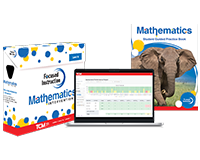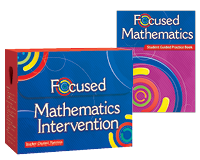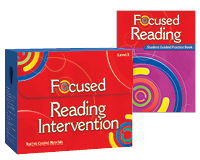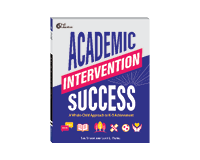How Can Teachers and Parents Make Academic Intervention More Effective?
Learning interventions are targeted, systematic approaches designed to support students who need additional support. Whether in reading, math, or other subjects, an academic intervention aims to quickly bridge students’ individual learning gaps—providing students with the skills and confidence they need to progress. Effective academic intervention goes beyond simply offering remedial support; it engages and helps students take ownership of their learning. High-yield, impactful academic intervention includes must-have qualities to be successful.
What are the Best Practices in Academic Intervention?
High-impact intervention strategies help educators identify students’ specific learning needs and provide focused, timely support to close skill gaps and accelerate academic growth. Effective intervention programs help cultivate learning environments where all students can advance toward grade-level proficiency.
To achieve successful outcomes, academic intervention programs must be:
- Teacher-led and explicit, not solely dependent on technology.
- Grounded in research and evidence-based practices.
- Systematic and sequential, ensuring that lessons are consistent and structured to build on foundational skills
- Informed by regular, ongoing integrated assessments to guide instruction.
- Administered early, as soon as skill gaps are identified.
- Flexible, allowing for adjustments based on individual student needs within existing structures and formats.
- Focused on transferring skills, ensuring that students apply what they've learned.
- Blended, offering options for digital and physical implementation to teachers.
- Collaborative, involving all key stakeholders and prioritizing clear communication for student success.
Teacher-Led
One of the cornerstones of effective intervention is teacher-led instruction. This approach is more flexible, more responsive, and more personalized than automated or computer-driven solutions. Teachers can adapt their strategies in real-time, delivering targeted lessons that address specific learning gaps.
Effective intervention often involves explicit teaching routines, which ensure that students are engaged in direct, expert-led, focused instruction. Predictable routines provide structure, reduce uncertainty, and help students focus on learning.
These routines also support efficient use of time, minimize distractions, and reinforce academic behaviors through repetition. By combining structure with responsive teaching, teachers can deliver focused, high-impact instruction.
How to Make an Impact in Your Intervention Programs Webinar
Learn to plan lessons with high-yield instructional strategies that maximize student learning and incorporate engaging and entertaining instructional activities across content areas.
Watch Now
|
Research- and Evidence-Based
For academic intervention programs to be truly effective, they must be grounded in research and evidence-based strategies that are proven to yield positive learning outcomes for students.
Research-informed interventions ensure that the methods used are both effective and efficient, maximizing the impact of instructional time, avoiding ineffective or outdated strategies, and boosting students' success.
Systematic
Systematic academic interventions follow a clear and organized plan, focusing on one skill at a time. A systematic approach focused on key, isolated skills and series ensures that interventions are structured, targeted, and effective.
This approach ensures that interventions are not only responsive to individual student needs but also cohesive, efficient, and goal-oriented—maximizing the chances for meaningful, lasting academic improvement.
Integrated Assessment
Effective academic intervention programs must be based on timely, actionable data. Assessment, therefore, plays a critical role.
Summative assessments provide a comprehensive view of student performance and long-term learning outcomes, helping to evaluate overall achievement and instructional effectiveness.
Formative assessments offer immediate, skill-specific feedback. Conducted regularly, they provide valuable information to guide instructional decisions and make real-time adjustments, ensuring interventions are tailored to each student’s needs.
Mastering the Formative Assessment Data Cycle Playbook
Grades K–12
Turn formative assessment data into action with a resource that systematically walks teachers through a four-phase cycle and includes tips, tools, and examples to help collect, analyze, and act on student data with confidence.
Download Now
|
Summative assessments track long-term progress, while formative assessments provide the insights needed for responsive, targeted teaching to form a powerful, data-driven cycle for effective academic intervention.
Standards-based assessments help measure progress towards specific, measurable goals, ensuring that interventions are aligned with key education standards.
The integration of summative and formative assessments offers a full spectrum of data. At the classroom, school, and district levels, data-driven reporting is crucial. Reports allow educators to track progress, identify trends, and make informed decisions about instructional adjustments. Clear and easily shareable data keeps all stakeholders informed.
How Soon Should Academic Intervention Begin?
Early academic intervention is key to addressing learning difficulties before skill gaps grow. Catching learning struggles early—especially in reading and math—is one of the most powerful tools teachers have to change student outcomes. Early academic intervention, grounded in observation and formative assessment, helps prevent small skill gaps from becoming lasting barriers.
By identifying challenges in the early stages of education, teachers can implement targeted strategies that address foundational skills. Timely, targeted support can boost foundational skills, student confidence, and achievement. Short, focused lessons on specific skills can make a significant difference in preventing long-term academic struggles and lead to long-term academic success.
Early Academic Intervention Checklist
Grades K–5
Take action early with the help of this tool. Clear, actionable steps and checkboxes to help you spot learning struggles early, reteach effectively, and collaborate with confidence.
Download Now
|
Flexible
Effective interventions are flexible, allowing educators to adjust instruction based on individual student needs while also fitting within existing intervention structures and delivery models.
Flexibility features include built-in differentiation options that make it easier to personalize learning without disrupting established routines. The best interventions can be tailored to student needs and implemented efficiently across different group sizes, schedules, and instructional settings.
Transferable
Skill transfer focuses on helping students apply what they've learned in real-world contexts.
Effective academic Interventions emphasize active learning and problem-solving, ensuring that students can use new skills with practice and independently. This approach promotes long-term academic success.
Blended
Though teacher-led instruction remains the cornerstone of effective academic intervention, technology can enhance teaching and learning and offer benefits.
Digital tools can support practice, assessment, and data collection. In a blended model, giving teachers the choice of how to implement instruction empowers them to use their professional judgment, selecting the tools and formats that best meet their students’ needs and classroom context.
Data-Informed
At the classroom, school, and district levels, data-driven reporting is crucial. Reports from assessments allow educators to track progress, identify trends, and make informed decisions about instructional adjustments for students, groups, and classes.
Collaborative
Effective academic intervention relies on strong collaboration among educators, school leaders, and families. Collaboration between families, teachers, and administrators is a powerful partnership that benefits students. Clear, shareable data ensures all stakeholders are informed and aligned, helping to guide instruction and monitor progress with a school-wide intervention model. Leadership supports this by creating systems for communication, setting expectations, and ensuring intervention time is prioritized through thoughtful scheduling.
Family engagement is also essential to the process. When families are active participants in an academic intervention plan, they can better support learning at home. Transparent communication and shared goals between school and home create a powerful support system for student success.
Finally, professional development equips staff with the tools to interpret data and apply effective, research-based strategies. When educators work together with shared goals, intervention becomes more cohesive and effective.












